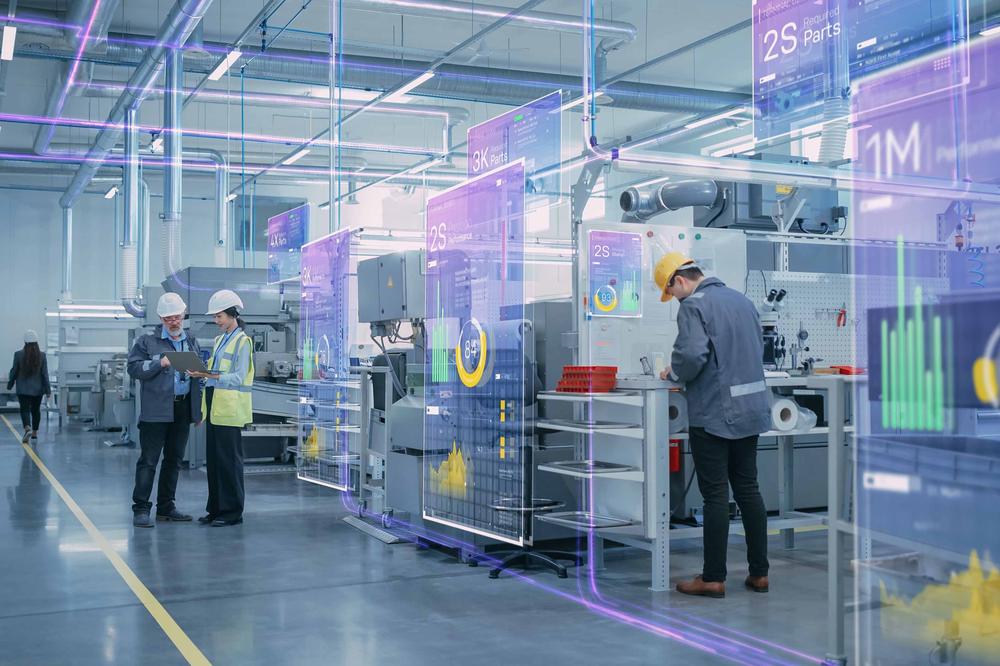
The B2B platform for the best purchasing descision. Identify and compare relevant B2B manufacturers, suppliers and retailers
Close
Filter
Result configuration
Continents
Select continent
Locations
Result types
Company type
Select company type
Industries
Select industry
Company status
Select company status preset
Number of employees
Min.
Max.
Founding year
Sensory
United States
B
51-100 Employees
1994
Key takeaway
Sensory’s software solutions offer advanced speech recognition technology that enables natural language voice control without the need for cloud data, making it ideal for manufacturers of hearables and fitness accessories. Their ability to support custom wake words and provide a seamless user experience highlights the importance of sensory recognition in modern devices.
Reference
Product
| Sensory
Sensoryx
Zurich, Switzerland
A
1-10 Employees
2015
Key takeaway
Sensoryx is a Swiss startup that enhances interactions in the Metaverse through its patented tracking technology, which improves accuracy and responsiveness in VR and AR systems. Their innovations enable new ways to engage with digital content, making sensory recognition in immersive environments more effective.
Reference
Product
Technology – Sensoryx
Sensoreal Inc.
Montreal, Canada
A
1-10 Employees
2014
Key takeaway
Sensoreal has developed an innovative microfluidics-based technology that enables rapid and precise diagnostic solutions, which may be relevant for sensory recognition applications. Their self-powered microfluidic chips allow for various assays in diverse environments, ensuring lab-grade accuracy with minimal hands-on time.
Reference
Product
Technology — Sensoreal
Looking for more accurate results?
Find the right companies for free by entering your custom query!
25M+ companies
250M+ products
Free to use
MachineVantage
Berkeley, United States
B
51-100 Employees
2016
Key takeaway
sensori.AI focuses on enhancing product development by understanding non-conscious consumer connections, making it relevant for sensory recognition. Their experienced team collaborates with major brands to create innovative solutions that resonate with consumer desires.
Reference
Core business
ABOUT – sensori.ai
Smart Sensory Box
Italy
B
1-10 Employees
2015
Key takeaway
Smart Sensory Solutions offers an intuitive system designed for managing sensory and consumer tests, enabling companies to recruit customers, test products, and gather valuable insights into consumer reactions. Their adaptable software streamlines the data acquisition and analysis process, making it a powerful tool for enhancing sensory research.
Reference
Product
Solution - Smart Sensory Solutions
Full cloud, full local or a combined system, Smart Sensory box is your portable sensory lab.

SENSORY LOGIX (PTY) LTD
South Africa
C
1-10 Employees
2006
Key takeaway
Sensory Solutions specializes in enhancing accessibility for individuals with visual impairments. They provide a range of Assistive Technology products, including the Orbit Magna 3 handheld magnifier, which features multiple high-contrast color modes and a significant magnification range, making it a valuable tool for sensory recognition.
Reference
Service
Services – Sensory Solutions
Sensory Testing Systems
Phoenix, United States
B
11-50 Employees
1993
Key takeaway
Sensory Testing Systems is dedicated to delivering high-quality, compassionate patient care, which may suggest their expertise in sensory-related assessments.
Reference
Service
Services | Sensory Testing Systems
Sensorygen
South Pasadena, United States
B
1-10 Employees
2014
Key takeaway
Sensorygen leverages computational biology and artificial intelligence to identify natural compounds that enhance sensory properties while replacing toxic chemicals in everyday products. Their innovative approach has led to the development of effective, natural insect repellents and the use of AI algorithms for molecular discovery in taste and olfaction.
Reference
Core business
Home - Sensorygen
SYLEX s.r.o.
Bratislava, Slovakia
A
251-500 Employees
1995
Key takeaway
SYLEX specializes in designing and manufacturing tailored sensors, offering high-quality optical interconnect solutions and comprehensive monitoring systems. Their expertise in sensing systems suggests a strong capability in sensory recognition applications.
Reference
Product
Sensing systems - Sylex
ARA
Clearwater, United States
B
101-250 Employees
1991
Key takeaway
Adaptive Recognition specializes in developing intelligent software and imaging devices that are integral to image analytics and optical character recognition (OCR). Their advanced technology is utilized in various sectors, including vehicle access, traffic management, and ID security.
Reference
Core business
Adaptive Recognition | Image Capturing and Analytics
AI-based software and hardware components fo traffic and transport monitoring, access control, security, and other systems.
Technologies which have been searched by others and may be interesting for you:
Sensory recognition refers to the technological ability to identify and interpret sensory inputs from the environment. This includes processing information from various senses such as sight, sound, touch, taste, and smell. By utilizing advanced algorithms and artificial intelligence, sensory recognition systems can analyze data from sensors and cameras, enabling applications in diverse fields such as robotics, healthcare, and consumer electronics. These systems enhance user experiences by creating more interactive and responsive environments, allowing devices to adapt to human needs and preferences effectively.
Sensory recognition technology operates by utilizing a combination of sensors and algorithms to identify and interpret stimuli from the environment. This technology often leverages methods such as machine learning and artificial intelligence to process data from various sources, including visual, auditory, and tactile inputs. For instance, in visual recognition, cameras capture images, and algorithms analyze these images to detect objects, faces, or patterns. Similarly, auditory recognition involves microphones capturing sound waves, which are then processed to identify specific sounds or speech. The integration of these sensory inputs allows systems to respond to their surroundings effectively, enhancing user interaction and enabling applications across diverse fields such as smart devices, security systems, and healthcare.
1. Healthcare
In healthcare, sensory recognition technology is utilized for patient monitoring and diagnostics. Devices can recognize vital signs and detect anomalies in real-time, improving patient care and response times.
2. Retail
Retailers employ sensory recognition to enhance the shopping experience. By analyzing customer behavior and preferences, they can personalize marketing strategies and optimize store layouts.
3. Automotive
In the automotive industry, sensory recognition is used for advanced driver-assistance systems (ADAS). These systems can detect obstacles, monitor driver attention, and provide real-time alerts, contributing to safer driving.
4. Manufacturing
Manufacturers integrate sensory recognition for quality control and automation. This technology allows for the detection of defects in products and monitors equipment performance, leading to increased efficiency and reduced waste.
5. Security
In security, sensory recognition plays a critical role in surveillance and threat detection. Systems can identify unauthorized access or unusual behavior, enhancing safety in various environments.
1. Enhanced User Experience
Sensory recognition technologies improve user interactions by allowing devices to understand and respond to human senses more effectively. This leads to more intuitive interfaces and personalized experiences, making technology more accessible and engaging.
2. Increased Efficiency
By utilizing sensory recognition, systems can automate tasks and streamline processes. For example, voice recognition can facilitate hands-free operation, while gesture recognition can enable quick commands without physical input, saving time and enhancing productivity.
3. Improved Security
These technologies offer advanced security measures through biometric authentication methods such as facial recognition or voiceprint identification. This ensures that only authorized users can access sensitive information or systems, reducing the risk of unauthorized access.
4. Data Insights
Sensory recognition can also gather valuable data on user behavior and preferences. This information allows businesses to analyze trends and tailor their products or services to better meet customer needs, leading to more effective marketing strategies and improved customer satisfaction.
The implementation of sensory recognition technology faces several challenges. One significant issue is data privacy concerns. As this technology often relies on collecting and analyzing personal data, ensuring user consent and safeguarding sensitive information becomes crucial. Another challenge is accuracy and reliability. Sensory recognition systems must be trained on diverse datasets to perform effectively across various environments and user demographics. Inconsistent performance can lead to user frustration and mistrust. Additionally, integration with existing systems can pose difficulties, as organizations may struggle to seamlessly incorporate new sensory recognition solutions into their current workflows and technologies.
Some interesting numbers and facts about your company results for Sensory Recognition
| Country with most fitting companies | United States |
| Amount of fitting manufacturers | 7290 |
| Amount of suitable service providers | 4860 |
| Average amount of employees | 11-50 |
| Oldest suiting company | 1991 |
| Youngest suiting company | 2016 |
20%
40%
60%
80%
Some interesting questions that has been asked about the results you have just received for Sensory Recognition
What are related technologies to Sensory Recognition?
Based on our calculations related technologies to Sensory Recognition are Big Data, E-Health, Retail Tech, Artificial Intelligence & Machine Learning, E-Commerce
Which industries are mostly working on Sensory Recognition?
The most represented industries which are working in Sensory Recognition are IT, Software and Services, Other, Electronics and Electrical engineering, Defense, Medical
How does ensun find these Sensory Recognition Companies?
ensun uses an advanced search and ranking system capable of sifting through millions of companies and hundreds of millions of products and services to identify suitable matches. This is achieved by leveraging cutting-edge technologies, including Artificial Intelligence.